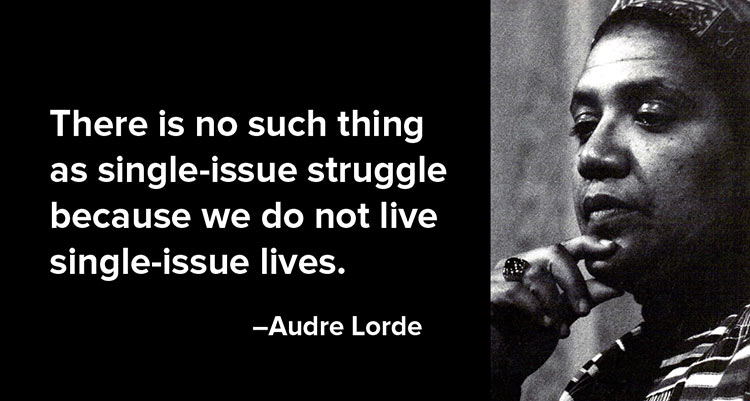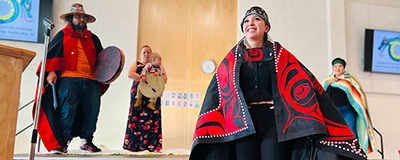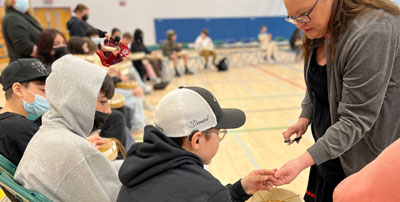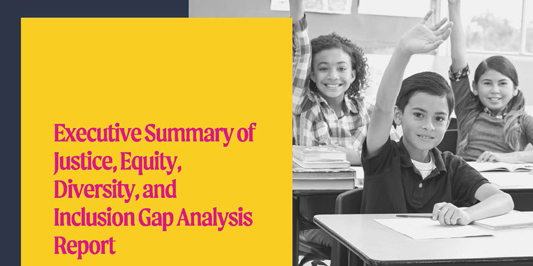Intersectionality can be defined as the interconnected nature of ethnicity, race, creed, gender, socio-economic position etc. (cultural, institutional and social), and the way they are embedded within existing systems and define how one is valued.*
*Canadian Race Relations Foundations, 2022
And, as we noted in our section on checking privilege, we can simultaneously have some identities that provide us privilege, while we have others that create barriers or expose us to harm.
As we talk about intersectionality, it is about the way in which people’s lives are shaped by their multiple and overlapping identities and social locations, which, together, can produce a unique and distinct experience for that individual or group. In the context of race and Indigenous identity, this means recognizing the ways in which people’s experiences of racism or privilege, including within any one group, may vary depending on the individual’s or the group’s relationship to additional overlapping or intersecting social identities, like religion, ethnic origin, gender, age, disabilities or citizenship and immigration status.
(Retrieved from ontario.ca/document/data-standards-identification-and-monitoring-systemic-racism/glossary2022 on Oct 22, 2022).
Audre Lorde states “There is no thing as a single-issue struggle because we do not live single-issue lives” … and so we must be able to see all identities and lived experiences and how they intersect with our own practices, both personally and professionally.

It’s important to also remember that it’s easy for us to ignore or overlook the identity markers we have that may give us privilege … while we are often more aware of the identities we have that are not centered or not considered the norm, because they are more likely to negatively impact us.
For example, a white, heterosexual, lower-income, woman may often be aware of how the gender and economic status identities impact her. But she may not spend as much time considering how whiteness and sexuality impact her, because it is what society typically considers the “norm” (or what society “centres”), and these portions of her identity allow her some level of privilege. Conversely, an Indigenous, queer, neurodiverse woman may be more regularly aware of the layers of oppression they experience, as she has to be aware of how gender, sexuality, race/Indigenous identity, and her neurodiversion can each be experienced as both individual and compounding barriers.
When thinking of intersectionality through an Antiracist or diversity lens, it is important to reflect on how privilege interacts with your life and relationships. Ask yourself:
- What are your own identities, privileges, and positions of power in relation to the issue(s) you are addressing?
- Are you a member of the group who is being impacted? Are you directly impacted by the issue(s)? Do you work with people who are directly impacted?
- Should you be speaking up on behalf of a group, in support of them, or instead listening and amplifying what a member of that group has already said?
- How does your position impact your work on the issue?
- Who are the people/groups with power and privilege? Have the groups/people/individuals changed over time?
Interested in continuing your learning? Use the navigation at the top of the page (in the left bar for desktop platforms, or the “Section menu” under the banner for mobile) to explore a new topic, or use the below button to get to the next page in the DEIA Parent Toolkit



